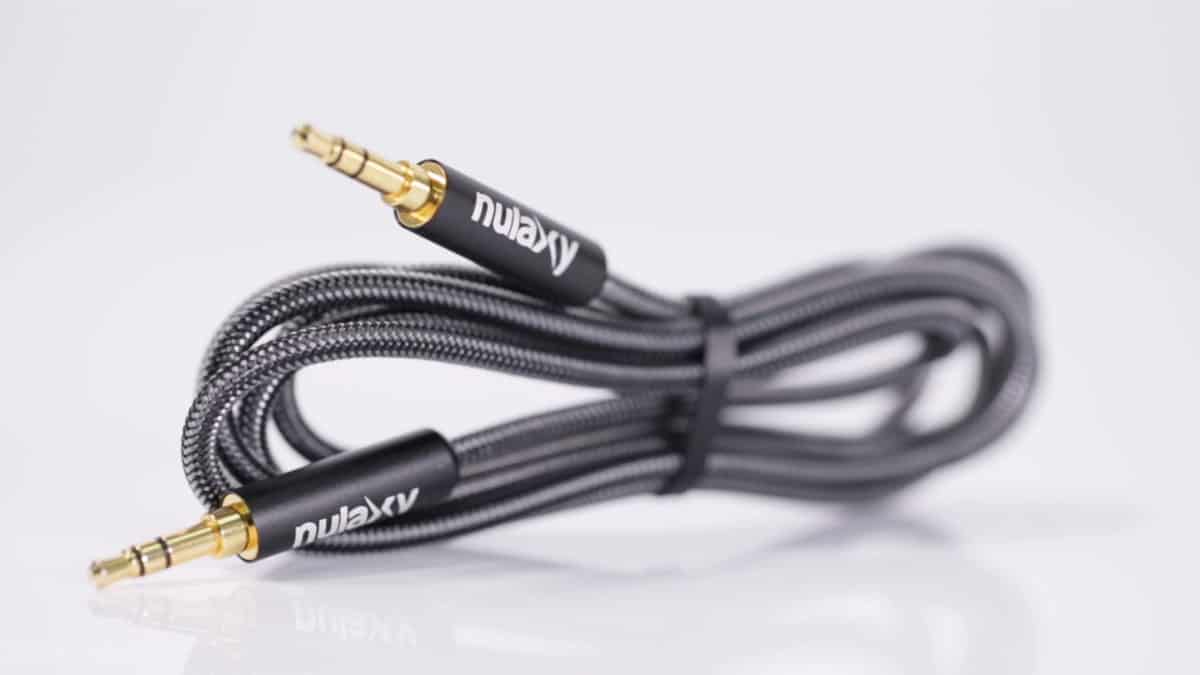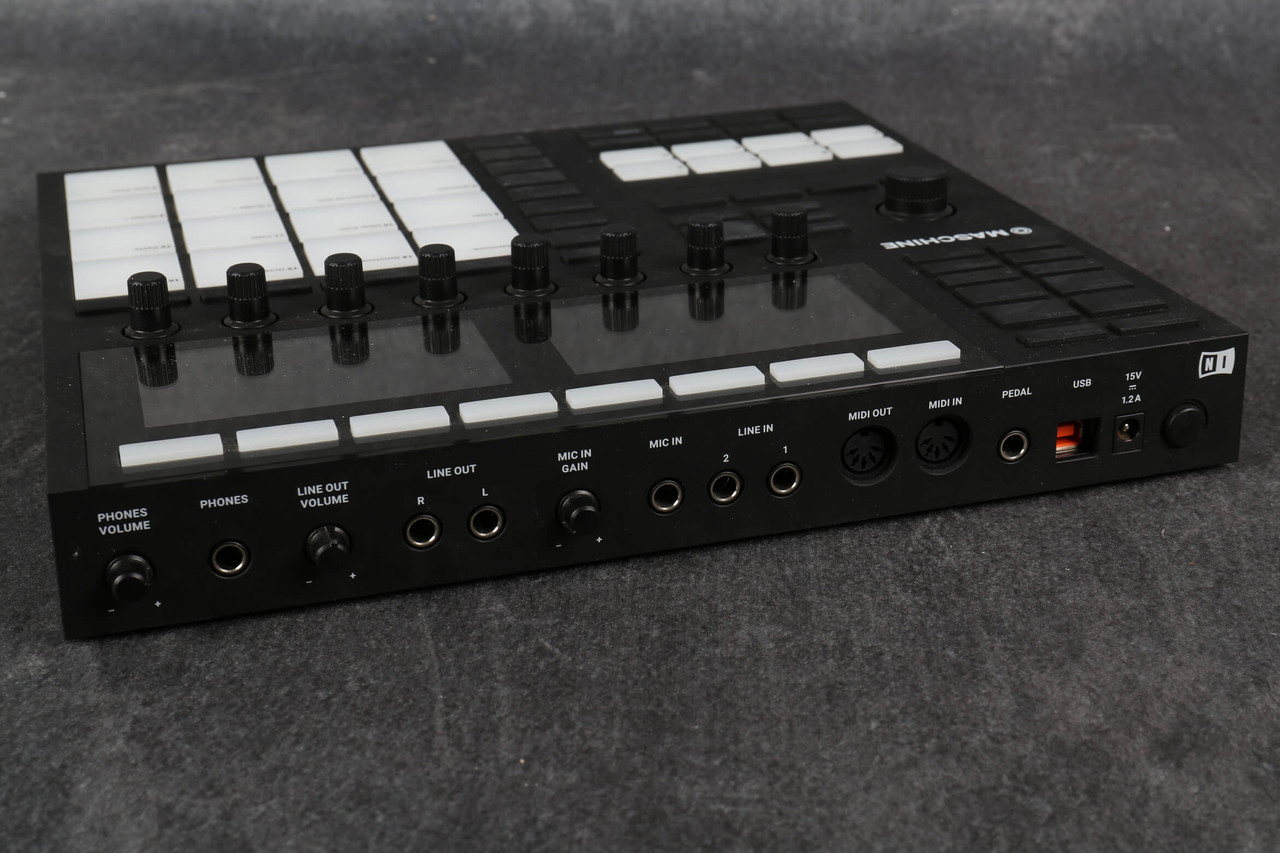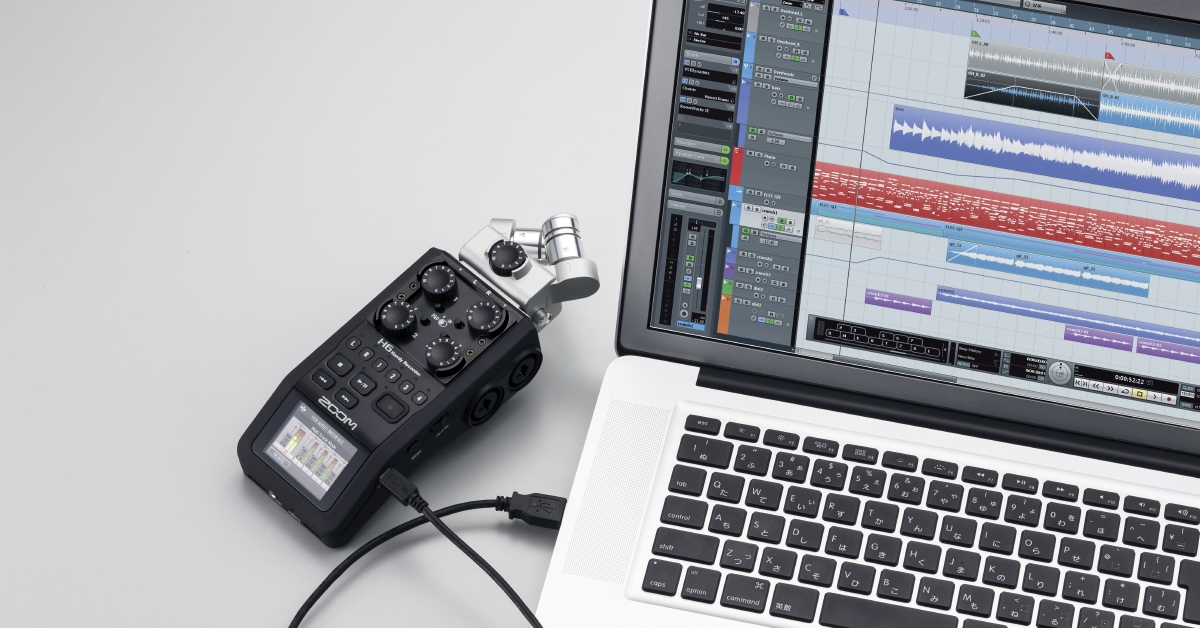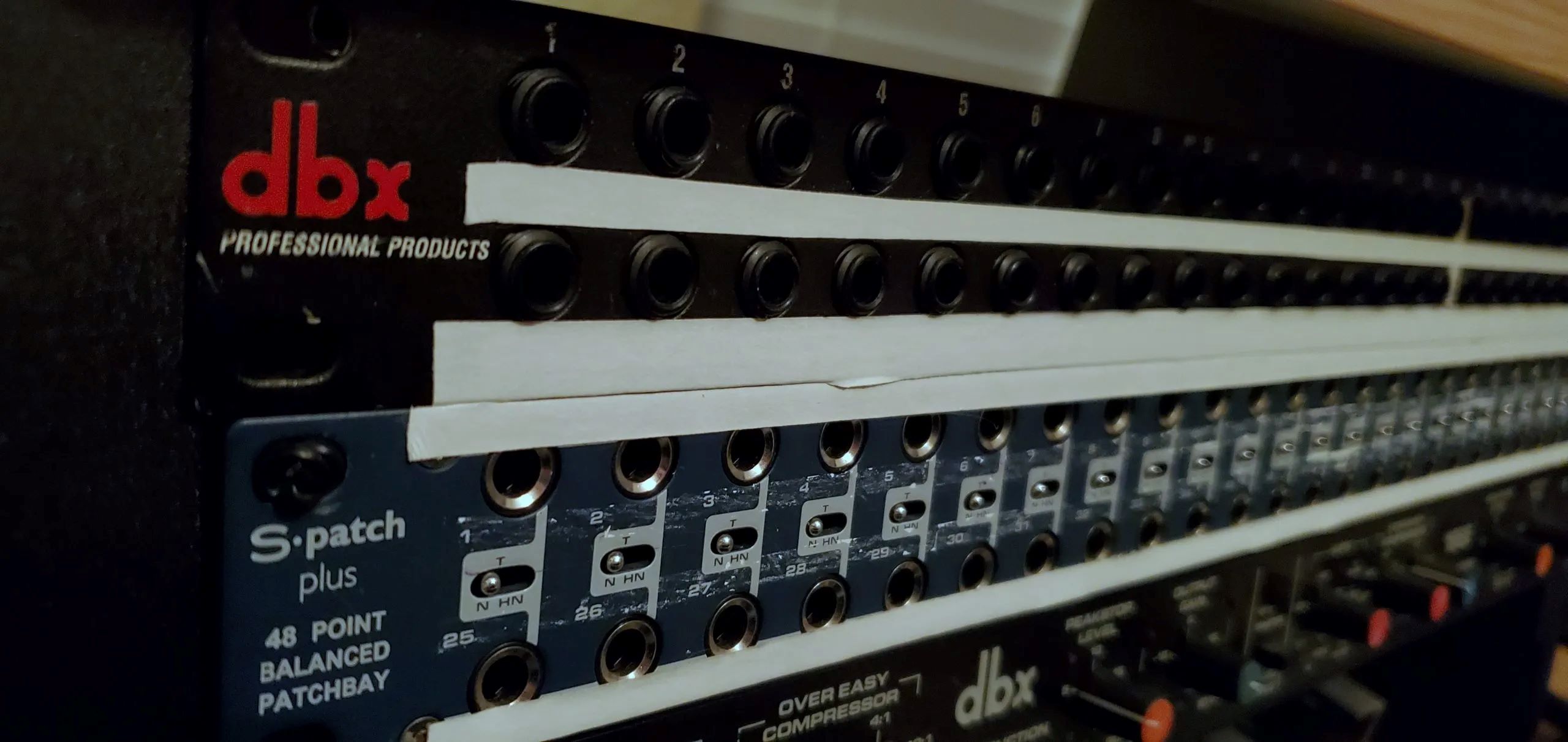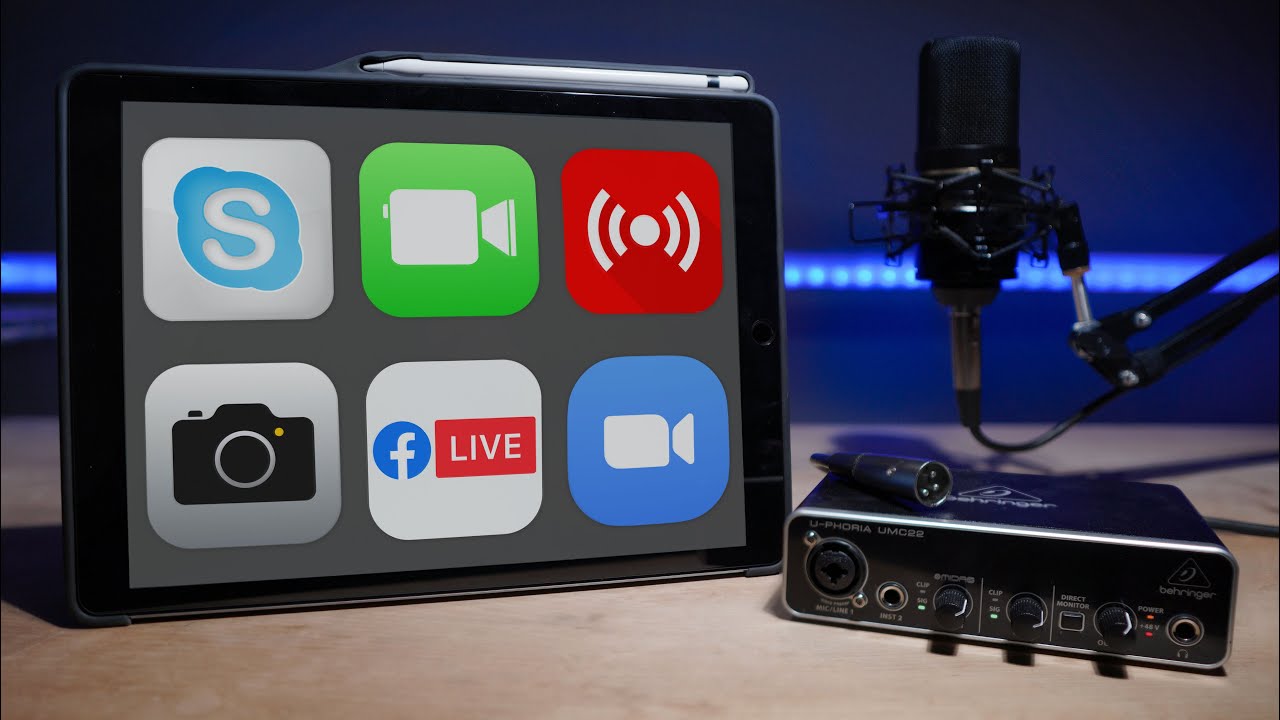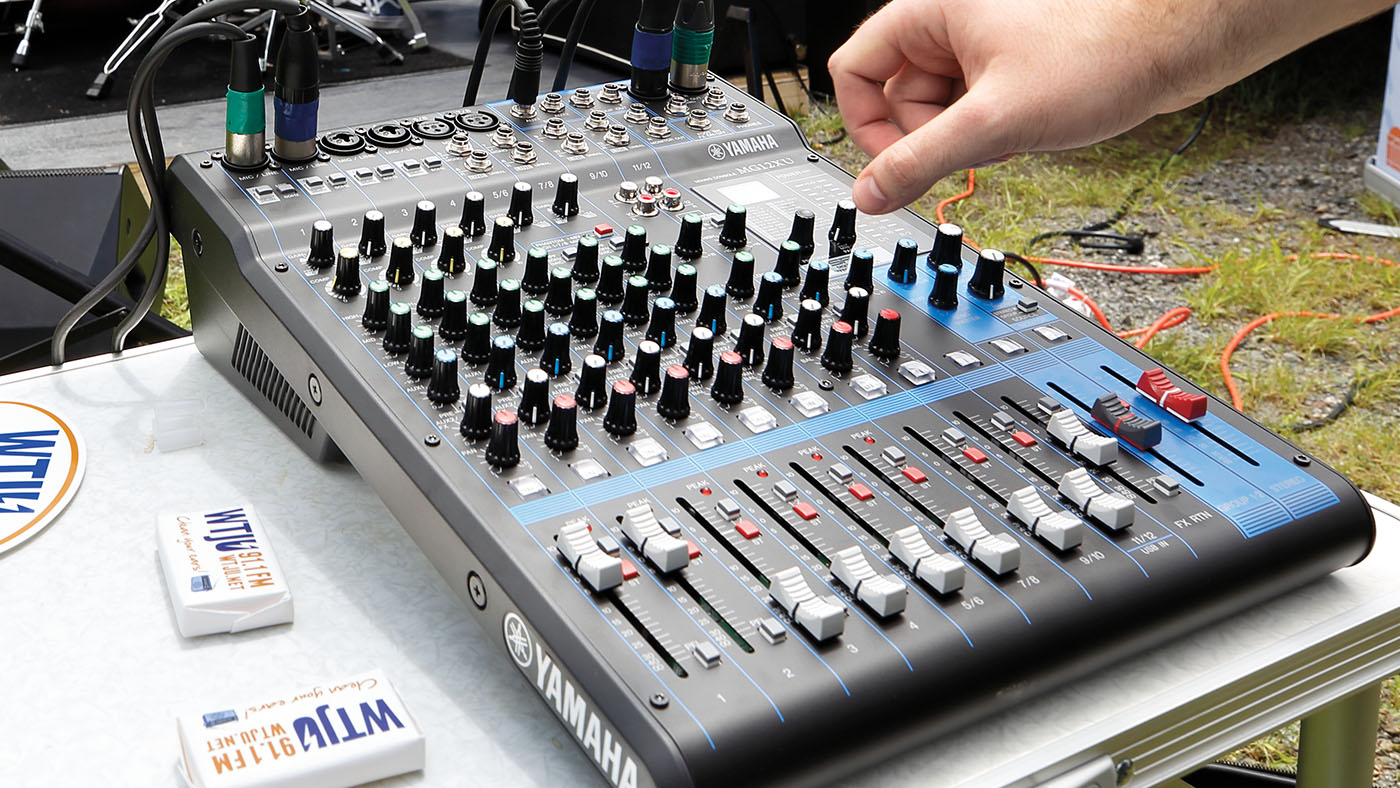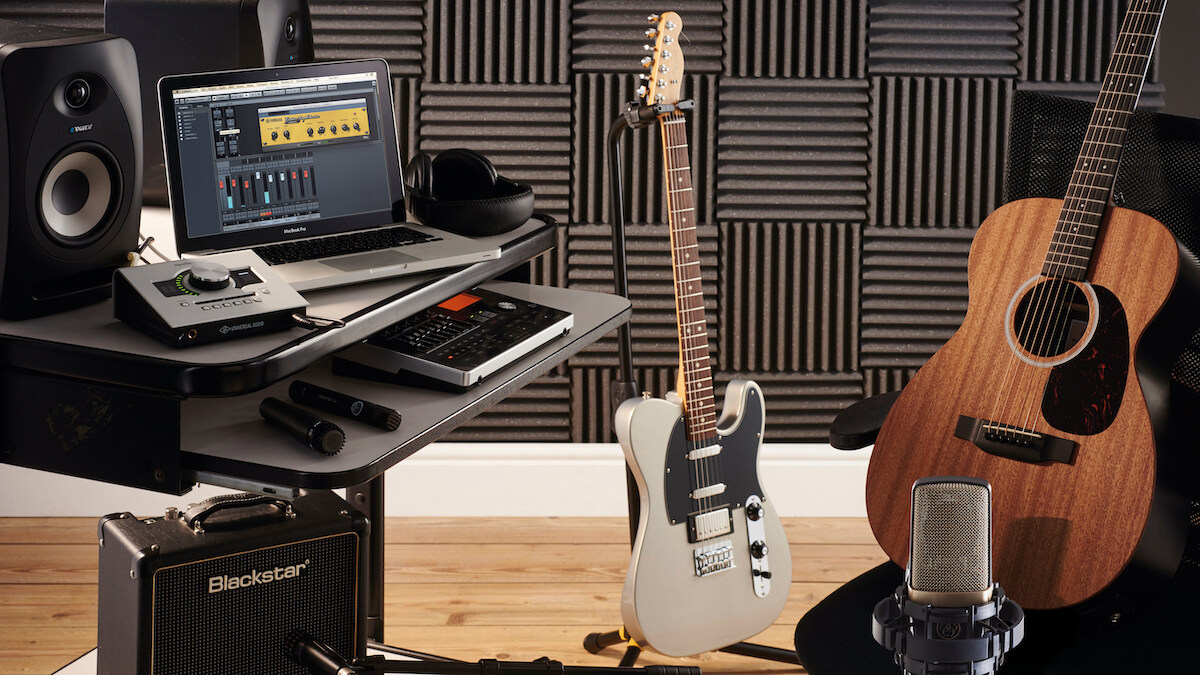Home>Production & Technology>Audio Interface>What Kind Of Cable To Use On A Main Out On Audio Interface


Audio Interface
What Kind Of Cable To Use On A Main Out On Audio Interface
Modified: March 7, 2024
Discover the Best Cable for Audio Interfaces. Find out what kind of cable is recommended for the main out on your audio interface and achieve optimal audio quality.
(Many of the links in this article redirect to a specific reviewed product. Your purchase of these products through affiliate links helps to generate commission for AudioLover.com, at no extra cost. Learn more)
Table of Contents
Introduction
Welcome to the world of audio interfaces! Whether you’re a beginner or a seasoned professional, understanding the technology behind audio interfaces is crucial for achieving high-quality sound. One essential component of an audio interface is the main out, which plays a vital role in connecting your interface to your speakers or monitors.
In this article, we will explore the importance of choosing the right cable for the main out of your audio interface. We will delve into the various types of cables that are compatible with the main out, such as XLR, TRS, TS, coaxial, and RCA cables. Additionally, we will discuss the factors to consider when selecting a cable for your audio interface.
Having the right cable for your main out is critical because it directly affects the quality of the sound output. With the wrong cable, you may experience signal loss, interference, or even damage to your equipment. Therefore, it is imperative to have a comprehensive understanding of the different cable options available and their suitability for your specific needs.
But don’t worry, we’ve got you covered! By the end of this article, you will be equipped with the knowledge and confidence to make an informed decision when it comes to selecting the perfect cable for your audio interface’s main out. So, let’s dive in!
Understanding Main Out on Audio Interface
The main out on an audio interface is the primary output connection that allows you to send your audio signals to your speakers or studio monitors. It serves as the main source of sound playback, making it a crucial component of any audio setup.
When you connect your audio interface to the main out, you are essentially routing your audio signals from the digital realm of your computer or recording device to the analog domain, allowing you to hear the sound through your speakers or headphones.
The main out typically comes in different formats, including XLR, TRS, TS, coaxial, and RCA connections, each having its own advantages and characteristics. The choice of which main out connection to use depends on the type of equipment you are connecting to and the specific requirements of your setup.
It’s important to note that some audio interfaces may have multiple main out options, such as separate left and right outputs or additional outputs for surround sound systems. These additional outputs can be useful for connecting to multiple sets of speakers or for routing audio to different destinations.
Understanding the main out functionalities and capabilities of your audio interface is crucial for optimizing your sound output and ensuring compatibility with your audio equipment. By familiarizing yourself with the available main out options and their specific features, you can make informed decisions when it comes to connecting your audio interface to your speakers or monitors.
Importance of Choosing the Right Cable
Choosing the right cable for the main out of your audio interface is of utmost importance for several reasons. The cable you use directly affects the quality of sound transmission, signal integrity, and overall audio performance. Here are a few key reasons why selecting the appropriate cable is crucial:
1. Signal Quality: The main out cable serves as the crucial link between your audio interface and speakers or monitors. Using a high-quality cable ensures that the audio signal is accurately transferred without any loss or degradation. A poor-quality cable can introduce signal noise, interference, or signal loss, resulting in a noticeable decrease in sound quality.
2. Compatibility: Different audio interfaces and speakers require different types of cables for optimal compatibility. Using the wrong cable can lead to connection issues, which may prevent your interface and speakers from working together seamlessly. It is essential to choose a cable that matches the main out connection on your interface and the input connections on your speakers.
3. Longevity and Durability: Investing in a reliable and durable cable ensures long-term performance and minimizes the risk of cable failure. High-quality cables are designed to withstand constant use, bending, and handling without affecting signal transmission. This reduces the chances of cable damage or malfunction over time.
4. Interference Reduction: A well-constructed cable with proper shielding helps reduce electromagnetic interference. This interference can be caused by nearby electrical equipment, radio signals, or other audio cables. By choosing a cable with effective shielding, you can minimize the impact of external interference and maintain a clean and clear audio signal.
5. Overall Audio Experience: The main out cable plays a significant role in delivering an immersive and enjoyable audio experience. By using a high-quality cable, you can maximize the potential of your audio interface and speakers, ensuring accurate sound reproduction and faithful representation of your music or audio content.
Ultimately, choosing the right cable for your audio interface’s main out is about optimizing sound quality, ensuring compatibility, and providing a reliable and consistent connection. It is a worthwhile investment that will greatly enhance your audio setup and overall listening experience.
Types of Cables Compatible with Main Out
There are several types of cables that are compatible with the main out of an audio interface. Each cable type has its own advantages, characteristics, and best-suited applications. Let’s explore the most common cable types used for connecting the main out:
1. XLR Cables: XLR cables are widely used in the audio industry and are known for their balanced design. They consist of three pins – positive, negative, and ground – which help reduce noise and interference. XLR cables are commonly used for connecting professional studio monitors or powered speakers to audio interfaces. They provide reliable and high-quality audio transmission, making them ideal for critical listening and recording environments.
2. TRS Cables: TRS (Tip-Ring-Sleeve) cables also use a balanced connection, but unlike XLR cables, they have a quarter-inch jack. TRS cables are often used for connecting audio interfaces to studio monitors, headphones, or other audio equipment that supports TRS connectivity. They provide a reliable and noise-free signal transmission, making them suitable for professional and home studio setups.
3. TS Cables: TS (Tip-Sleeve) cables, also known as mono cables, are unbalanced cables with a quarter-inch or 3.5mm jack. They are commonly used for connecting audio interfaces to instruments or devices that have mono outputs, such as guitars, keyboards, or synthesizers. TS cables are less resistant to noise interference compared to balanced cables but are still suitable for short cable runs and non-critical listening applications.
4. Coaxial Cables: Coaxial cables are typically used for carrying digital audio signals, such as S/PDIF (Sony/Phillips Digital Interface) or AES/EBU (Audio Engineering Society/European Broadcasting Union). Coaxial cables have a central conductor surrounded by a shielding layer, which helps prevent signal loss and interference. They are commonly used for connecting audio interfaces to digital devices, such as external converters or audio equipment with digital inputs.
5. RCA Cables: RCA cables are often used for consumer-level audio connections. They have a distinctive red and white color-coding, with the red cable carrying the right audio signal and the white cable carrying the left audio signal. RCA cables are commonly used for connecting audio interfaces to multimedia speakers, home theater systems, or consumer-grade audio devices.
When choosing a cable for your audio interface’s main out, consider the specific requirements of your setup, the equipment you are connecting to, and your desired audio quality. By selecting the right cable type, you can ensure optimal compatibility, signal integrity, and overall audio performance.
XLR Cables
XLR cables are widely considered the gold standard in audio connections. They are commonly used for the main out connection on audio interfaces and are known for their balanced design, which helps minimize noise and interference. XLR cables have three pins – positive, negative, and ground – that ensure effective signal transmission and reception. Here are some key points about XLR cables:
Advantages:
- XLR cables provide balanced audio transmission, which means they have a separate conductor for the positive and negative signals. This balanced design helps eliminate common mode noise and interference, resulting in a cleaner and more accurate audio signal.
- They offer a secure and reliable connection due to their locking mechanism. This ensures that the cables remain firmly in place and do not accidentally disconnect during use.
- XLR cables are commonly used in professional audio setups because of their ability to transmit audio signals over long distances without significant signal degradation. They are suitable for both live sound reinforcement and studio recording scenarios.
Applications:
- Connecting audio interfaces to studio monitors or powered speakers is one of the primary uses of XLR cables. They provide a clean and stable audio connection, allowing for accurate sound reproduction.
- XLR cables are also used in microphones, where they transmit the balanced audio signal from the microphone to the audio interface or mixing console.
- They are compatible with a wide range of audio equipment, including audio interfaces, mixers, amplifiers, and other professional audio gear that supports XLR connections.
Considerations:
- When using XLR cables, it’s important to match the correct pin configuration. Ensure that the cable is plugged into the appropriate input/output on your audio interface and the corresponding input/output on your speakers or monitors.
- Proper cable management is essential for XLR cables, especially in situations where multiple cables are in use. Utilizing cable organizers or keeping cables neatly coiled helps prevent tangles, reduces strain on the connectors, and improves overall system organization.
- When selecting XLR cables, consider the cable quality and construction. Investing in high-quality cables with sturdy connectors and efficient shielding helps ensure optimal signal transmission and longevity.
XLR cables provide a reliable and high-quality connection for the main out on audio interfaces. Their balanced design minimizes noise and interference, making them suitable for professional audio applications where accurate and clean sound reproduction is crucial.
TRS Cables
TRS (Tip-Ring-Sleeve) cables are widely used in audio connections and offer a balanced signal transmission. They are commonly used for the main out connection on audio interfaces, as well as for connecting headphones, studio monitors, and other audio equipment. Here are some key points about TRS cables:
Advantages:
- TRS cables provide a balanced connection, which helps eliminate noise interference. The tip carries the positive audio signal, the ring carries the negative audio signal, and the sleeve serves as the ground. This balanced design ensures reliable and high-quality audio transmission.
- They are available in different lengths, making them suitable for various setups, from home studios to large professional audio environments.
- TRS cables can carry stereo signals, allowing for left and right audio channels to be transmitted separately. This makes them ideal for connecting audio interfaces to stereo studio monitors or headphones.
Applications:
- The main out connection on an audio interface to studio monitors or powered speakers is one of the primary uses of TRS cables. They provide a balanced audio connection, resulting in clean and accurate sound reproduction.
- TRS cables are commonly used for connecting headphones to audio interfaces or headphone amplifiers. This allows for monitoring and accurate playback of audio during recording, mixing, or live performances.
- They can also be used for patching audio signals between various equipment in a studio setup, such as connecting an audio interface to outboard gear or routing audio to different input sources.
Considerations:
- When using TRS cables, it’s important to ensure that you are connecting to a TRS-compatible jack. Mixing TRS cables with TS (mono) jacks can result in an unbalanced connection, leading to potential signal issues.
- Proper cable management is essential to prevent tangling and reduce strain on the connectors. Coiling the cables neatly and utilizing cable organizers can help maintain a tidy and organized audio setup.
- Choosing high-quality TRS cables with reliable connectors and effective shielding is important to ensure optimal signal transmission and reduce the risk of interference or signal loss.
TRS cables provide a balanced and versatile option for the main out connection on audio interfaces. Their ability to transmit high-quality audio signals and compatibility with various audio equipment make them an essential component in professional and home studio setups.
TS Cables
TS (Tip-Sleeve) cables, also known as mono cables, are commonly used in audio connections where a balanced signal is not required. They have a simple design with a single conductor and are often used for instrument connections. Here are some key points about TS cables:
Advantages:
- TS cables are simple and straightforward in design, consisting of just two connectors – the tip and the sleeve. This design makes them cost-effective and widely available.
- They are commonly used for connecting instruments such as guitars, keyboards, or synthesizers to audio interfaces or amplifiers. TS cables transmit the audio signal in mono, making them suitable for instruments with single output channels.
- TS cables provide a reliable and straightforward connection, making them easy to use and suitable for beginners or non-professional audio setups.
Applications:
- The main use of TS cables is for connecting instruments to audio interfaces. They transmit the audio signal from the instrument to the recording device or amplifier, allowing for accurate sound reproduction.
- TS cables are commonly used in live sound setups, where instruments need to be connected to audio mixers or PA systems.
- They can also be used for other audio connections where a mono signal is sufficient, such as connecting external audio devices to audio interfaces or mixers.
Considerations:
- When using TS cables, it’s important to ensure that you are using the appropriate input/output jacks. Mixing TS cables with TRS or XLR jacks may result in unbalanced connections, affecting the audio signal quality.
- Proper handling and storage of TS cables are important to prevent tangling and damage to the connectors. Coiling the cables neatly and using cable organizers can help maintain their longevity.
- Choosing high-quality TS cables with durable connectors and efficient shielding can help minimize the risk of interference and signal loss.
TS cables offer a simple and cost-effective solution for instrument connections in audio setups. They are widely used for mono audio signals and provide a reliable connection for musicians, beginners, and non-professional audio applications.
Coaxial Cables
Coaxial cables are commonly used in audio connections that require digital transmission, such as S/PDIF (Sony/Phillips Digital Interface) or AES/EBU (Audio Engineering Society/European Broadcasting Union). They have a unique construction that enables them to carry digital audio signals effectively. Here are some key points about coaxial cables:
Advantages:
- Coaxial cables are designed to transmit digital audio signals with clarity and precision. They have a central conductor, surrounded by insulation and a shielding layer, which helps prevent signal loss and interference.
- They offer high data transmission rates, making them suitable for carrying high-quality audio signals without significant degradation or distortion.
- Coaxial cables are commonly used in professional audio setups where accurate digital audio transmission is essential, such as connecting an audio interface to an external converter or linking digital audio equipment.
Applications:
- The main use of coaxial cables is for connecting audio interfaces or other digital audio devices to external converters or digital audio equipment. They enable the transmission of digital audio signals with minimal loss or distortion.
- Coaxial cables are commonly used in home theater systems, where they connect DVD or Blu-ray players to surround sound systems or AV receivers.
- They can also be used to connect audio interfaces to audio routers or digital mixers in professional audio installations.
Considerations:
- When using coaxial cables, it’s important to ensure proper cable management, especially in environments with multiple cables. Avoid sharp bends or kinks in the cables, as they can affect signal integrity.
- When selecting coaxial cables, consider the cable quality and choose cables with efficient shielding and proper insulation to minimize the risk of interference.
- When connecting coaxial cables, ensure that the connectors are securely fastened to guarantee reliable signal transmission and reduce the chances of accidental disconnection.
Coaxial cables are essential for transmitting digital audio signals efficiently and accurately. With their ability to maintain signal integrity and high data transmission rates, they are the go-to choice for connecting audio interfaces or digital audio equipment in professional audio installations and home theater setups.
RCA Cables
RCA cables, named after the Radio Corporation of America that popularized them, are commonly used for consumer-level audio connections. They are easily recognizable by their red and white color-coding and are widely used for audio and video applications. Here are some key points about RCA cables:
Advantages:
- RCA cables are simple and widely available, making them a popular choice for connecting audio devices in consumer-grade setups.
- They provide a straightforward connection for audio signals, with the red cable typically carrying the right audio channel and the white cable carrying the left audio channel.
- RCA cables are commonly used for analog audio connections, such as connecting audio interfaces to multimedia speakers, home theater systems, or audio devices with RCA inputs.
Applications:
- One of the primary uses of RCA cables is connecting audio interfaces to multimedia speakers or stereo systems. They provide a convenient way to transmit audio signals in stereo, allowing for accurate stereo sound reproduction.
- RCA cables are commonly used in home theater setups to connect DVD or Blu-ray players to AV receivers or surround sound systems. This allows for immersive, multichannel audio playback.
- They can also be used for connecting audio interfaces to external recorders or audio playback devices with RCA inputs.
Considerations:
- When using RCA cables, it is important to match the correct color-coded connectors to their corresponding inputs/outputs. This ensures the correct placement of left and right audio channels.
- While RCA cables can transmit audio signals effectively, they may be more susceptible to interference and signal degradation compared to balanced cables like XLR or TRS cables. Keeping RCA cables away from potential sources of interference is important for maintaining signal quality.
- Choosing high-quality RCA cables with good shielding and solid connectors helps minimize the risk of signal loss or distortion, ensuring optimal audio transmission.
RCA cables offer a simple and cost-effective solution for consumer audio connections. They are commonly used in home theater systems, multimedia setups, and other scenarios where stereo audio transmission is required. With their widespread availability, RCA cables provide a convenient means of connecting audio interfaces to various consumer audio devices.
Factors to Consider When Choosing a Cable
When choosing a cable for the main out of your audio interface, there are several factors to consider to ensure optimal performance and compatibility. Here are some key factors to keep in mind:
1. Cable Type: Consider the specific requirements of your audio setup and the type of connection your audio interface supports. Determine whether you need a balanced or unbalanced cable, and choose the appropriate type accordingly. XLR, TRS, TS, coaxial, and RCA cables each have their own advantages and best-suited applications.
2. Length: Determine the length of cable you need based on the distance between your audio interface and the speakers or audio devices you are connecting to. It’s important to choose a cable length that allows for flexibility in positioning while keeping in mind signal degradation over longer cable runs.
3. Quality: Invest in high-quality cables to ensure reliable and optimal signal transmission. Look for cables with sturdy connectors, durable construction, and efficient shielding. Higher quality cables are less prone to signal loss, interference, and damage, providing a longer lifespan and better overall performance.
4. Compatibility: Ensure that the cable you choose is compatible with both your audio interface’s main out connection and the input connections of your speakers or other audio devices. Consider factors such as connector type, pin configuration, and impedance matching to ensure a seamless and accurate audio connection.
5. Application and Environment: Consider the specific application and environment in which the cable will be used. Are you connecting to studio monitors, live sound systems, or home theater systems? Take into account factors such as noise interference, durability, and flexibility to select a cable that is well-suited for your intended use.
6. Budget: While quality is important, it’s also essential to consider your budget when choosing a cable. There are cables available at various price points, so find a balance between quality and affordability that fits your needs.
By considering these factors, you can select a cable that meets the requirements of your audio setup, ensuring optimal signal transmission, compatibility, and overall performance. Remember, choosing the right cable is essential for achieving high-quality sound and maximizing the potential of your audio interface.
Conclusion
Choosing the right cable for the main out of your audio interface is crucial for achieving optimal sound quality and maintaining a reliable audio connection. Whether you’re connecting to studio monitors, headphones, or other audio equipment, considering the factors discussed in this article will help you make an informed decision.
Understanding the different types of cables available, such as XLR, TRS, TS, coaxial, and RCA, allows you to select the most appropriate cable for your specific needs. Each cable type has its own advantages and best-suited applications, whether it’s balanced audio transmission, stereo connections, or digital audio transmission.
Factors such as cable length, quality, compatibility, application, and budget should also be taken into consideration. Choosing a cable of the appropriate length, with high-quality construction and shielding, ensures optimal signal transmission and minimizes the risk of interference or signal loss. Additionally, ensuring compatibility between the cable and your audio interface and other equipment is essential for a seamless and reliable audio connection.
By making a thoughtful and informed decision when choosing a cable, you can enhance your audio experience, whether you’re a musician, producer, sound engineer, or simply an audio enthusiast. Investing in the right cable not only improves the quality of sound reproduction but also ensures the longevity and durability of your audio setup.
Remember to carefully evaluate your specific requirements, consider the available options, and ultimately select the cable that best suits your needs and budget. This will enable you to unlock the full potential of your audio interface and enjoy high-quality sound for years to come.

